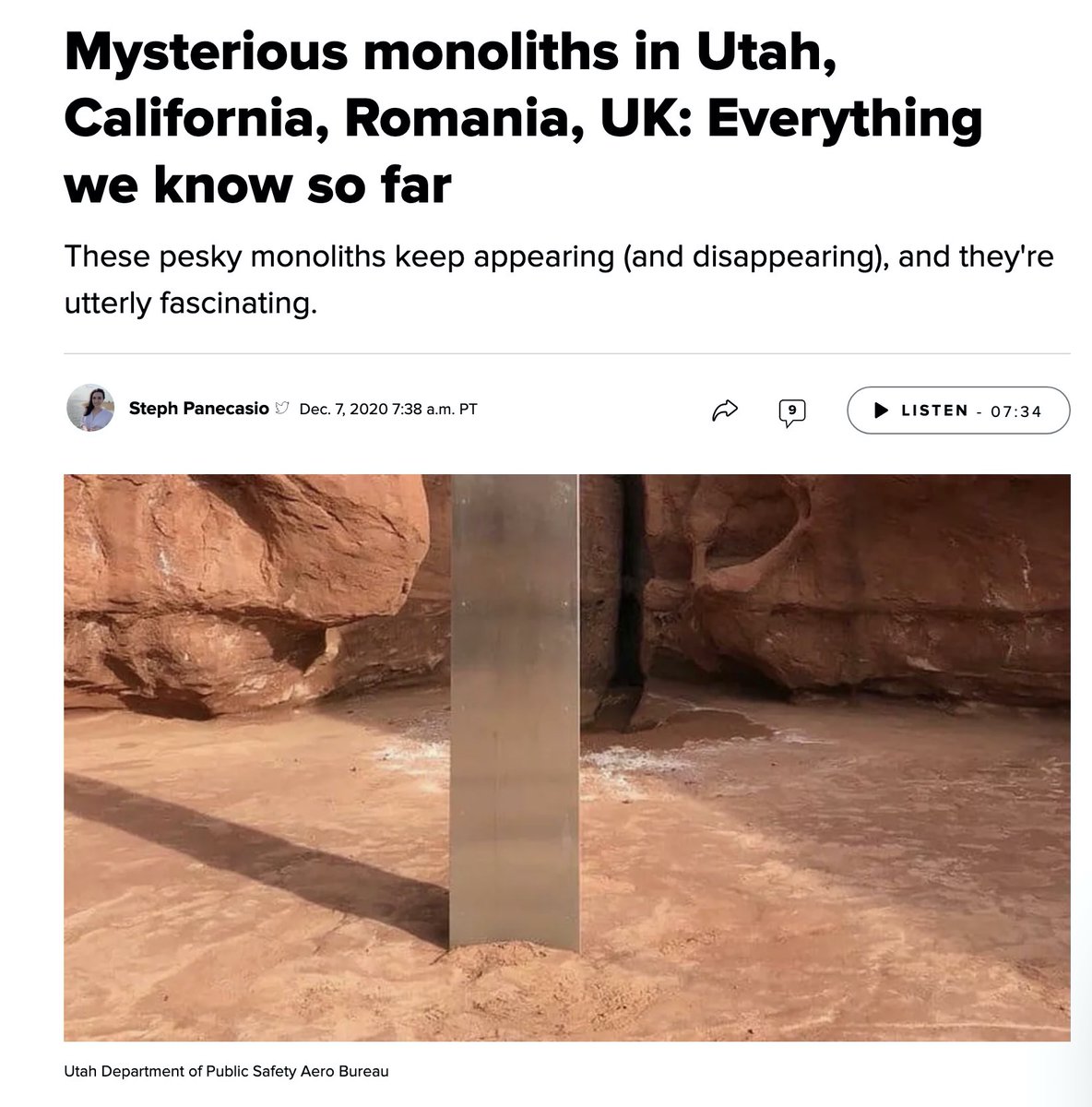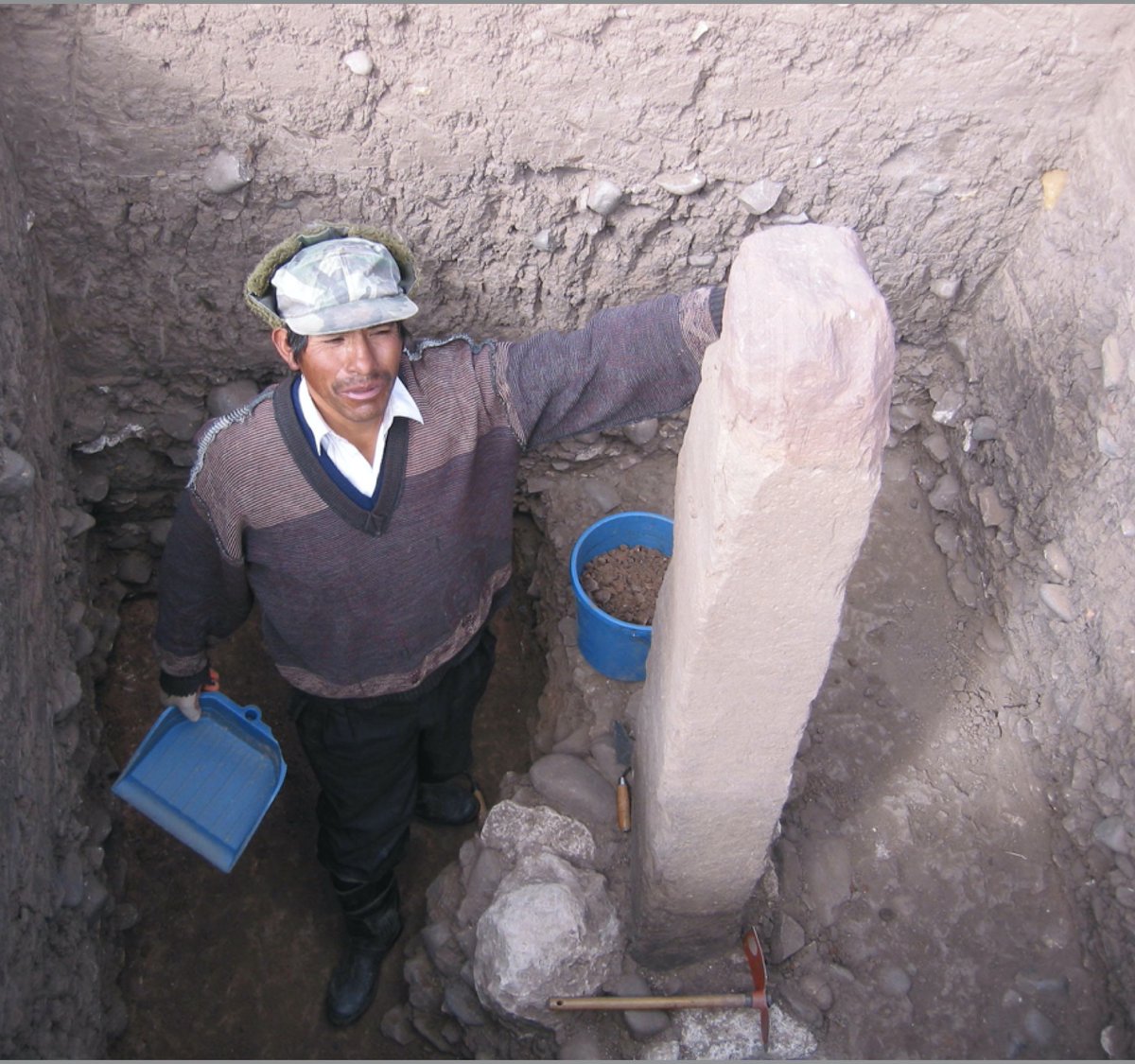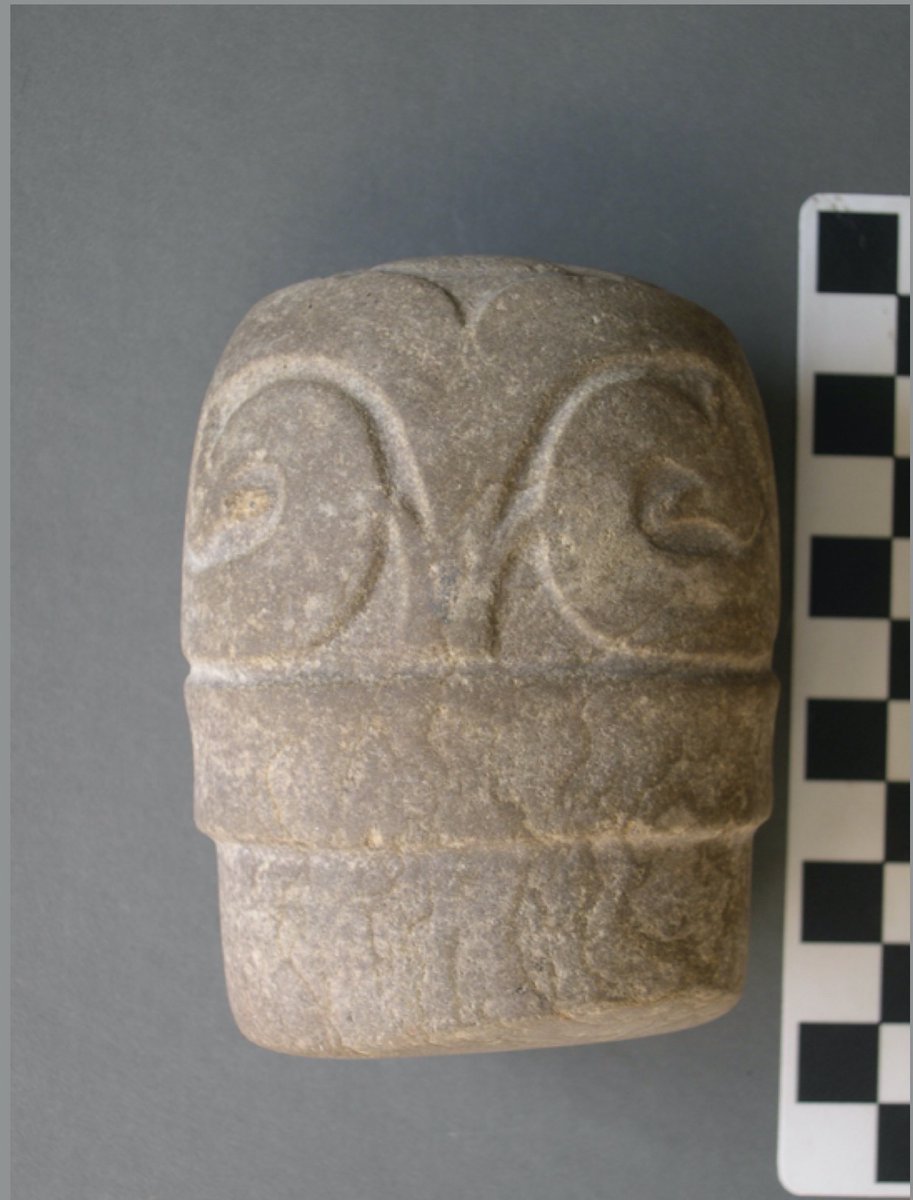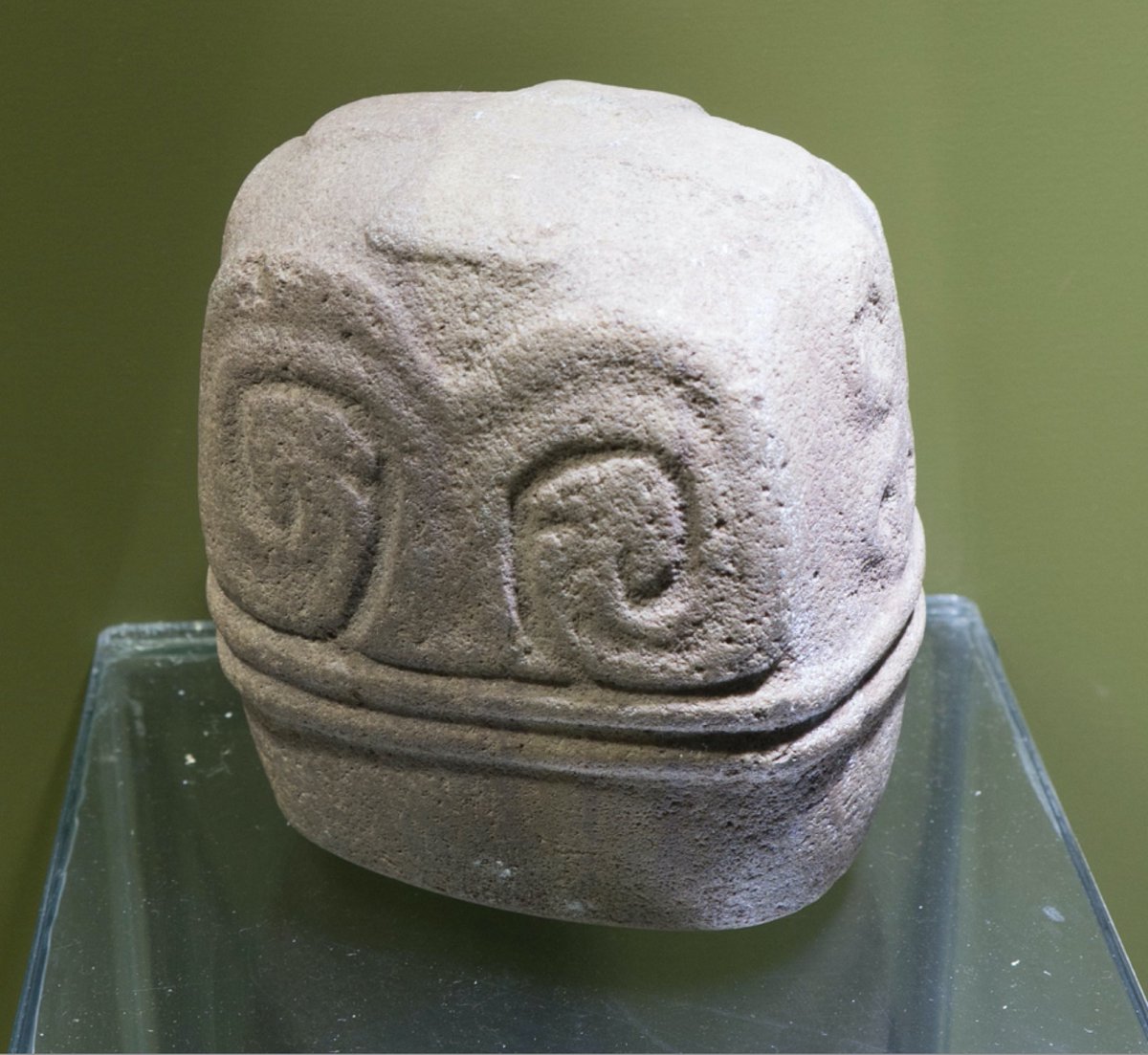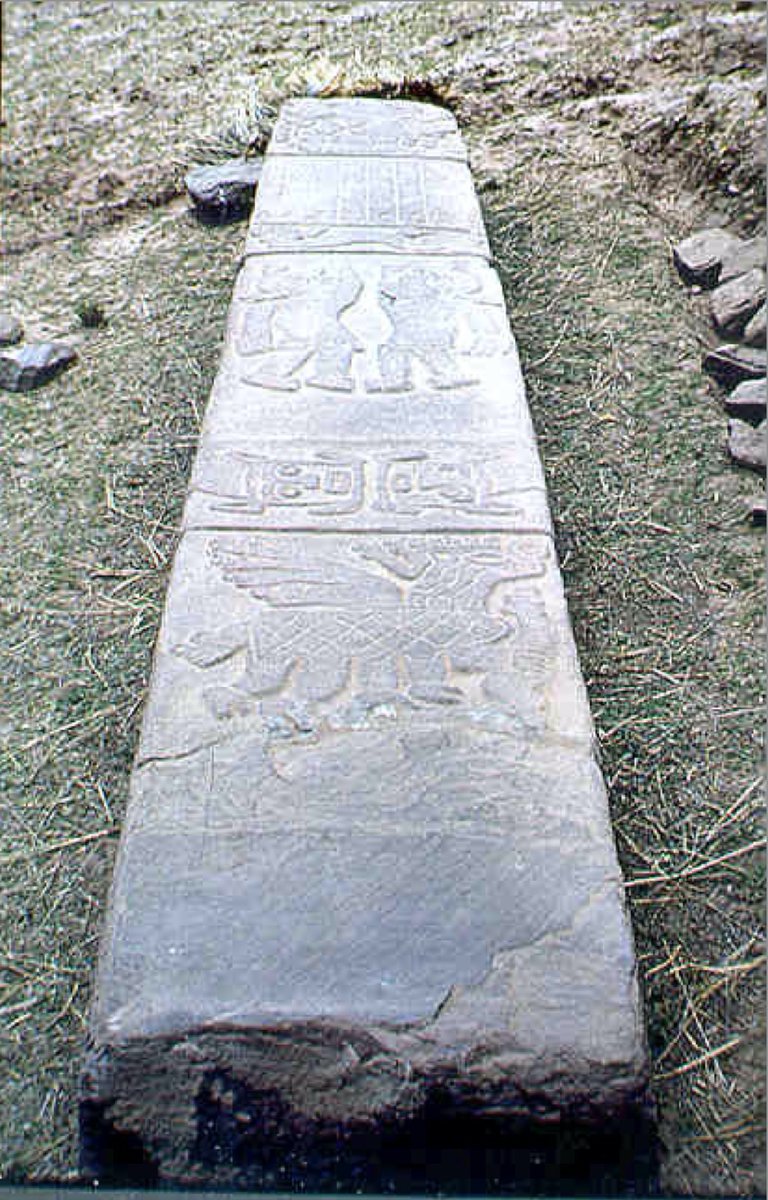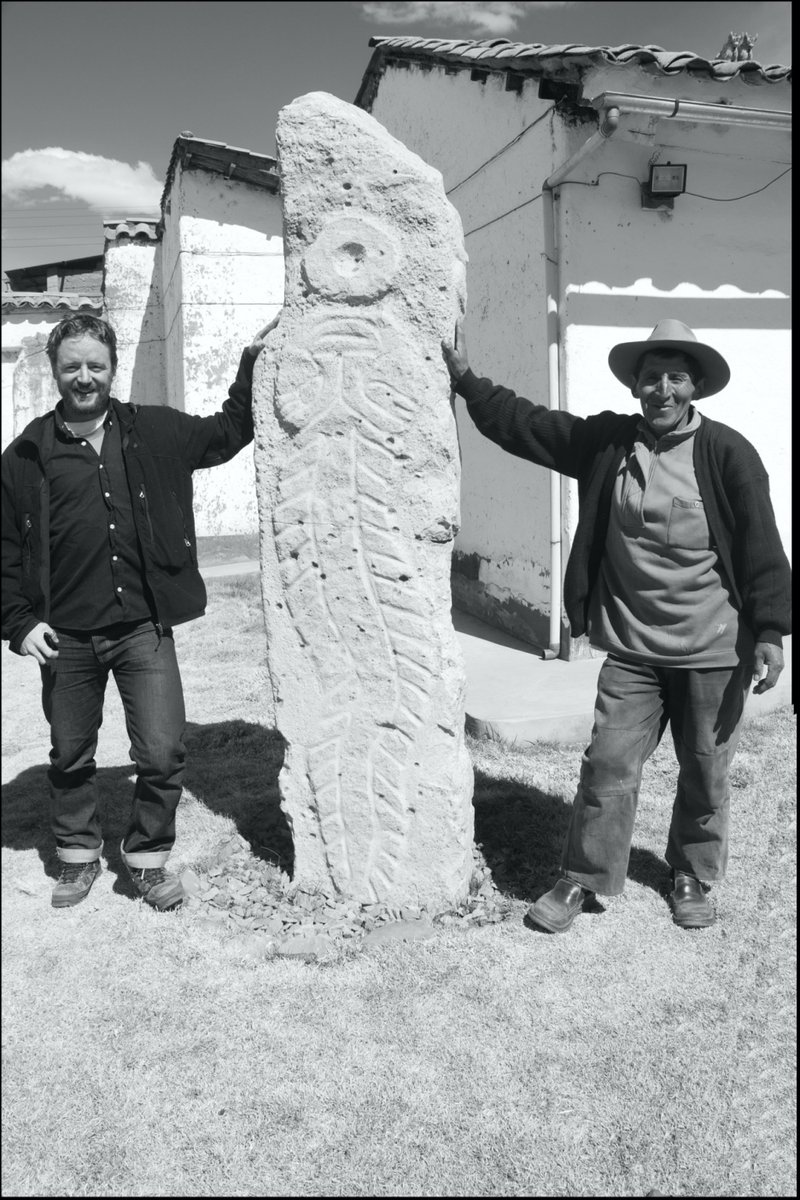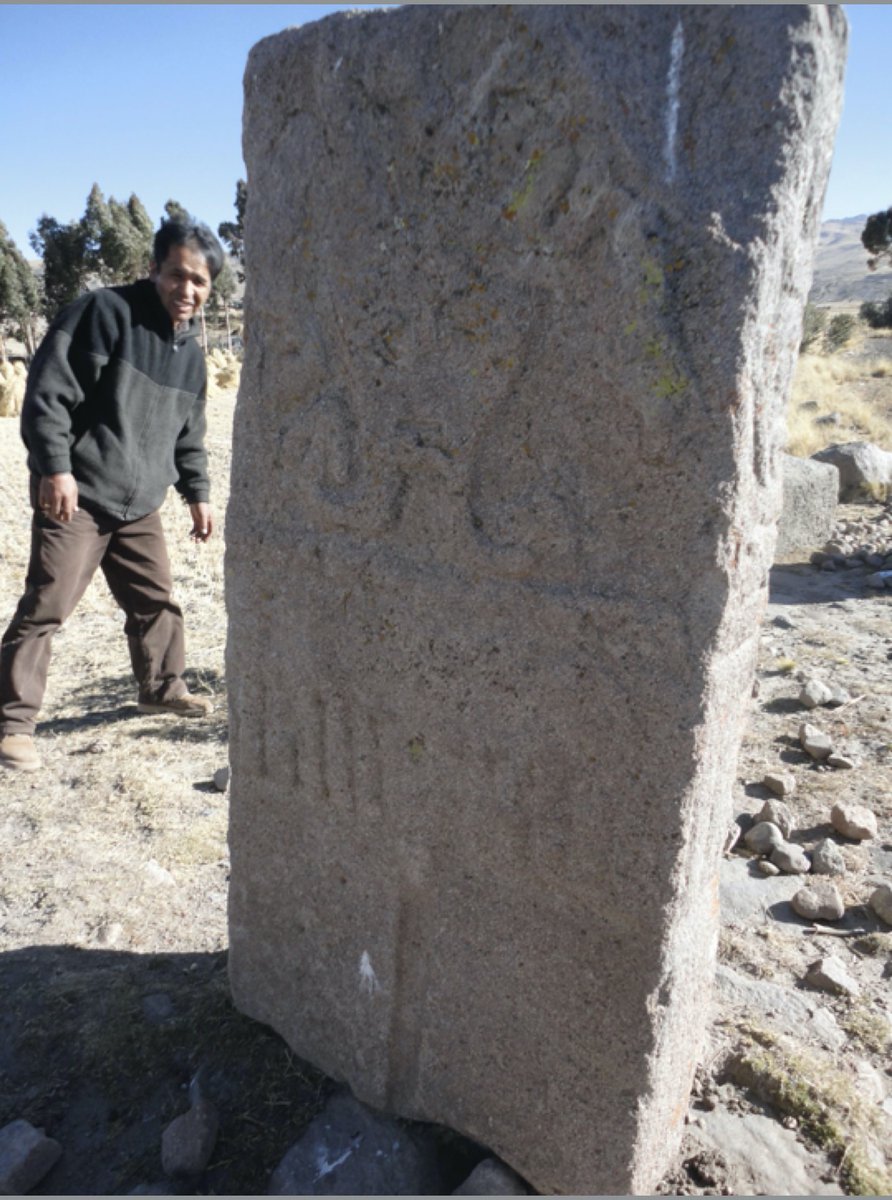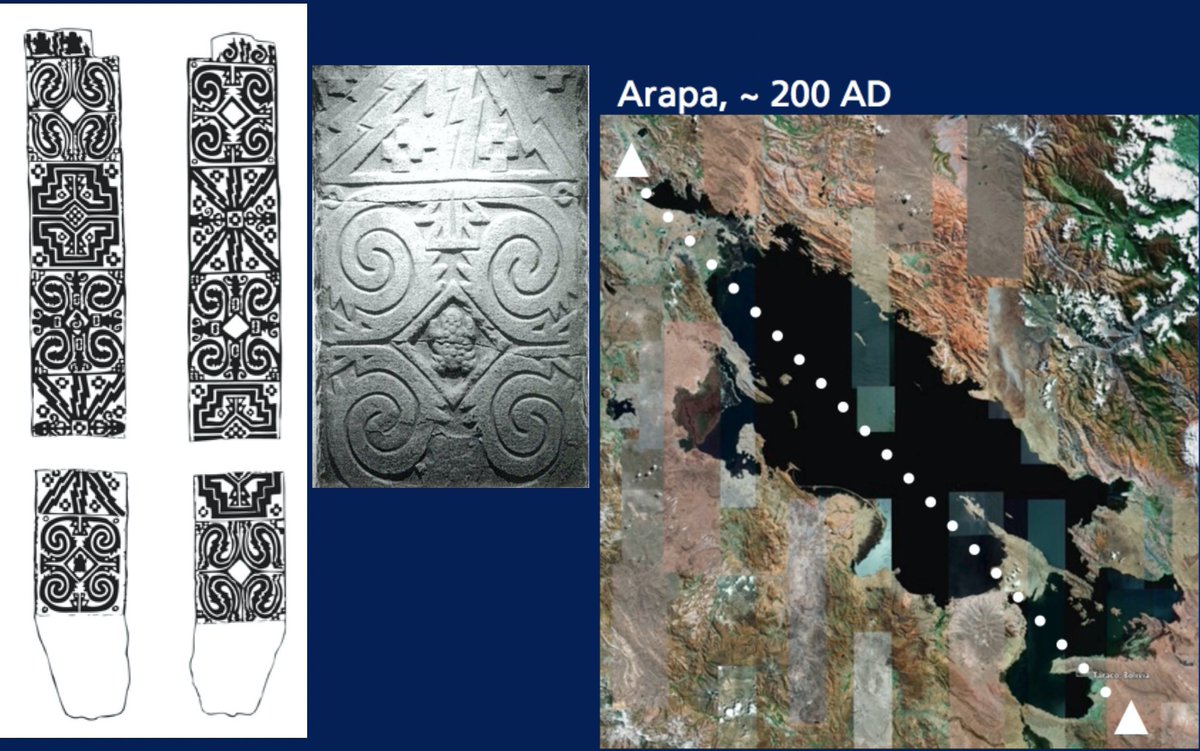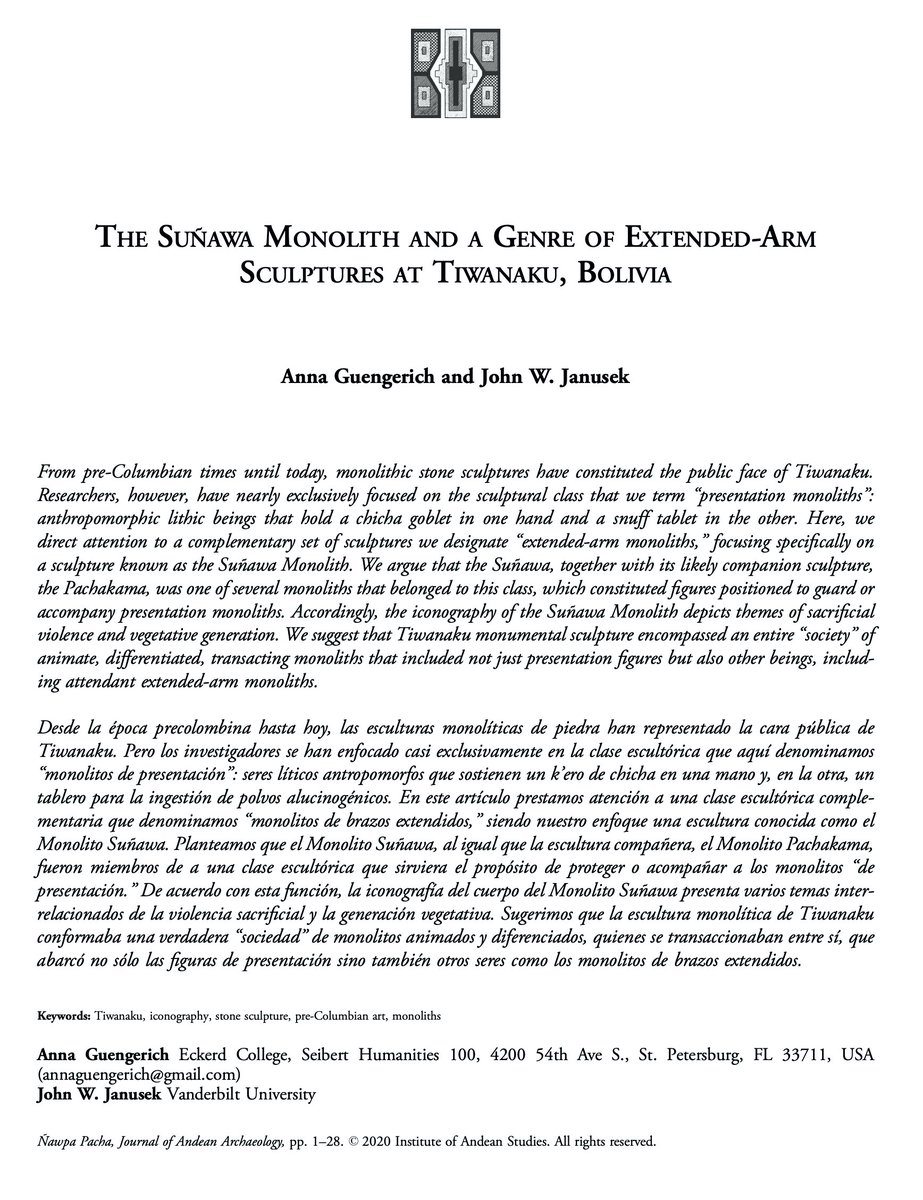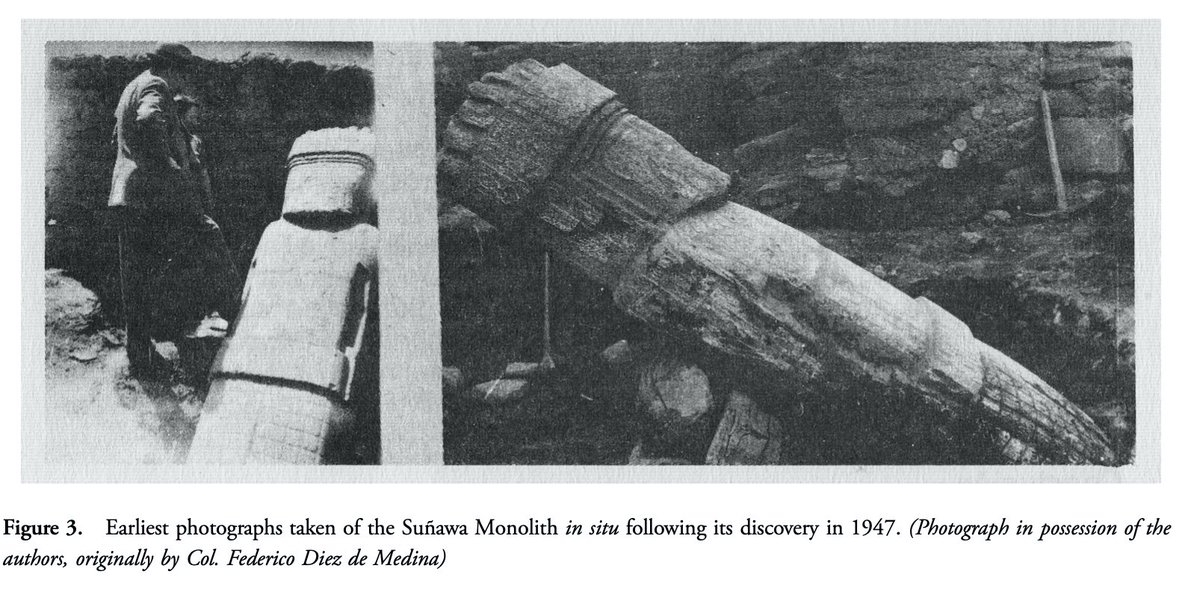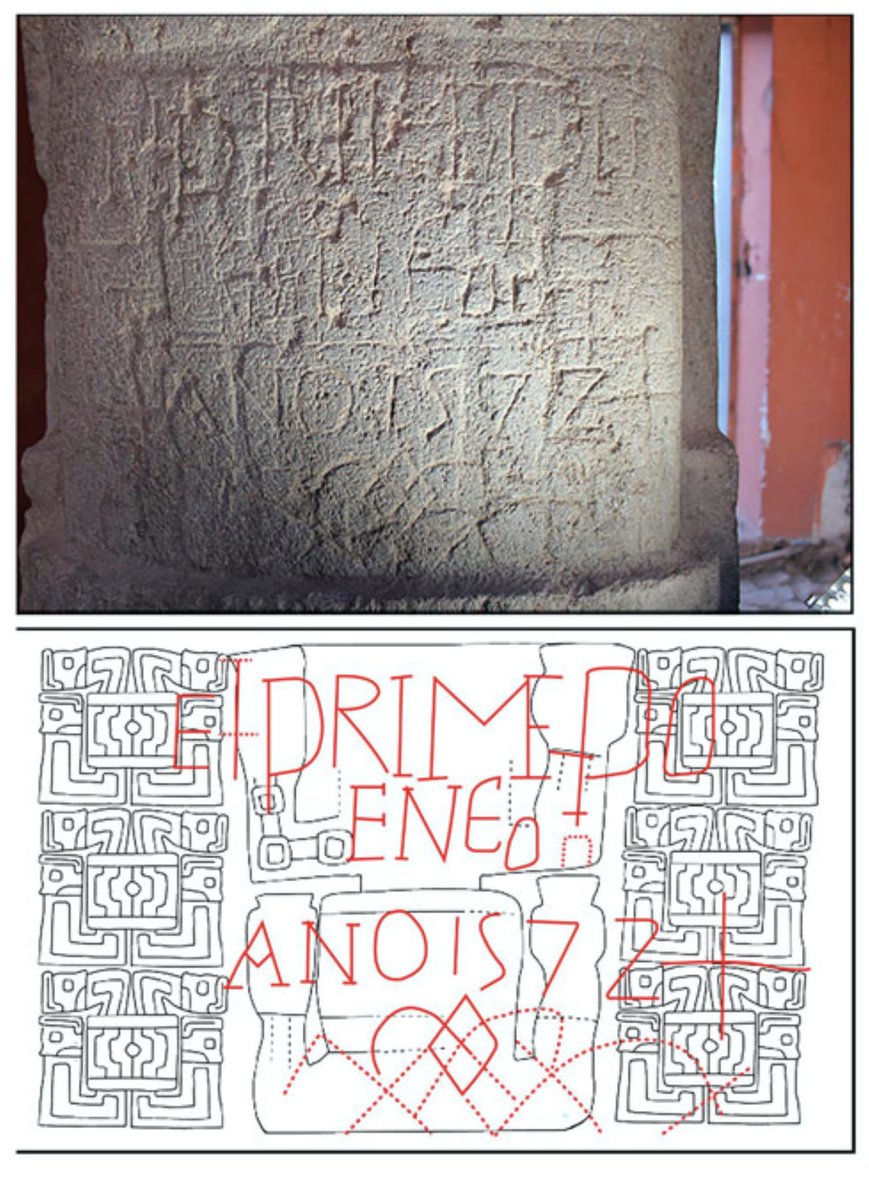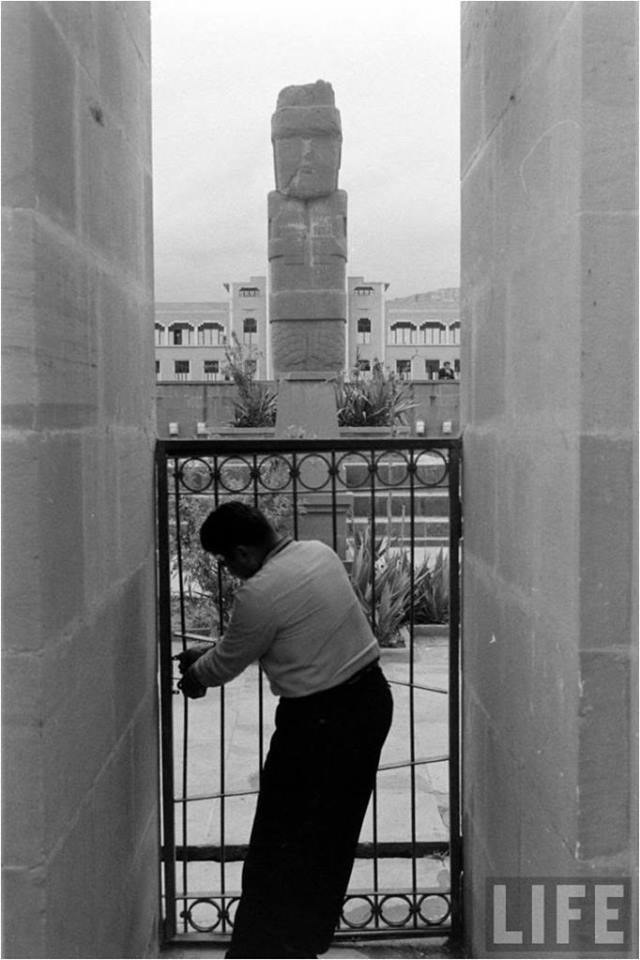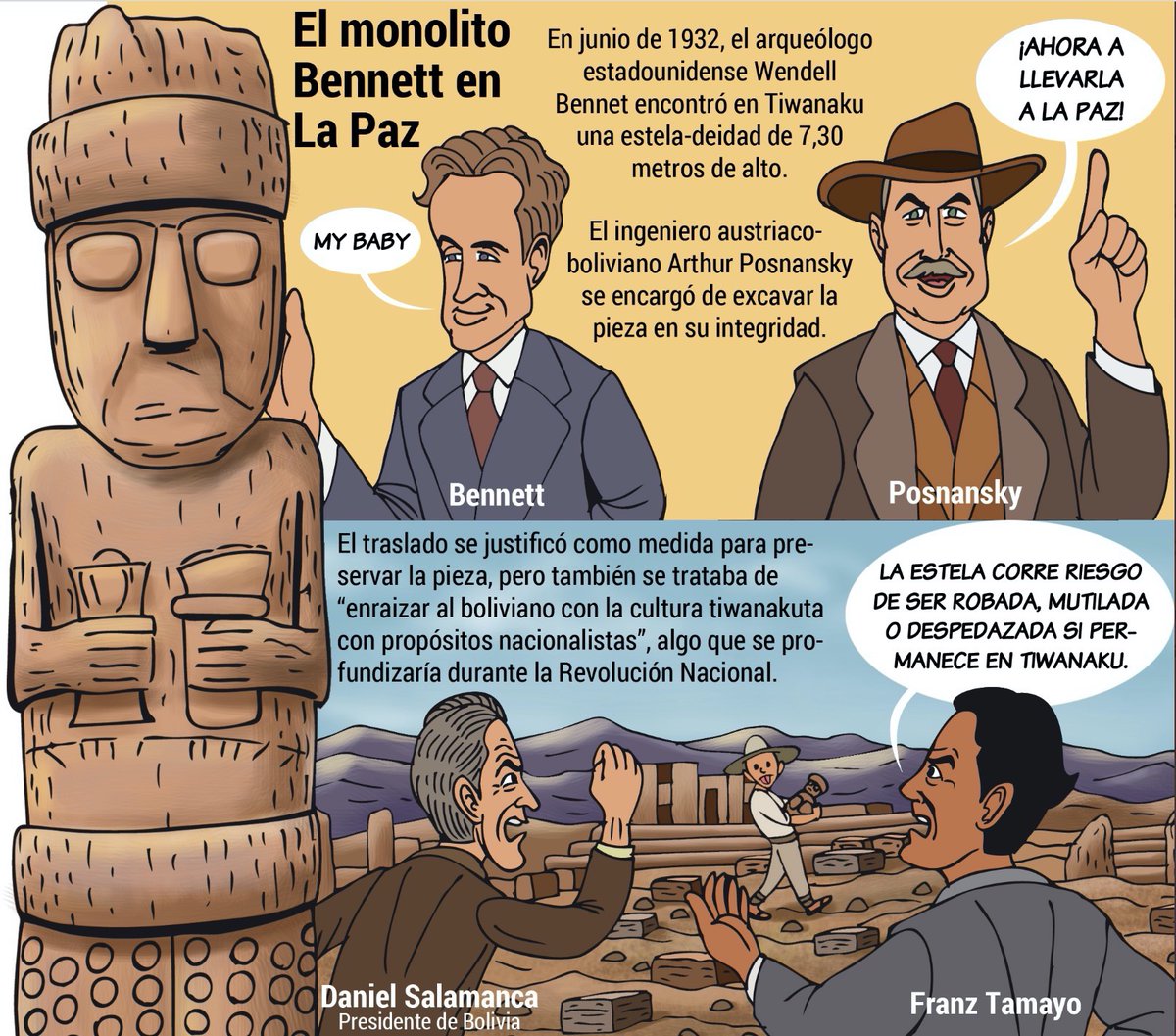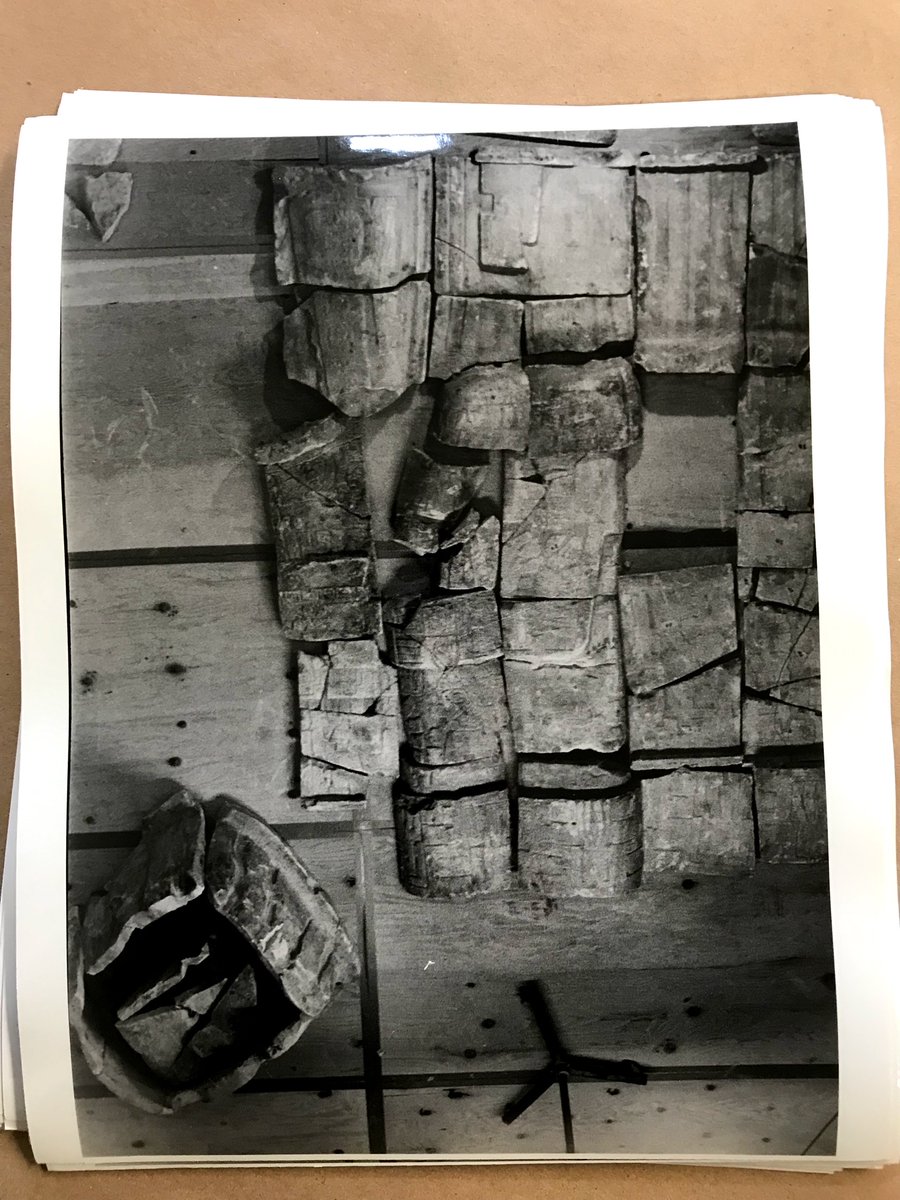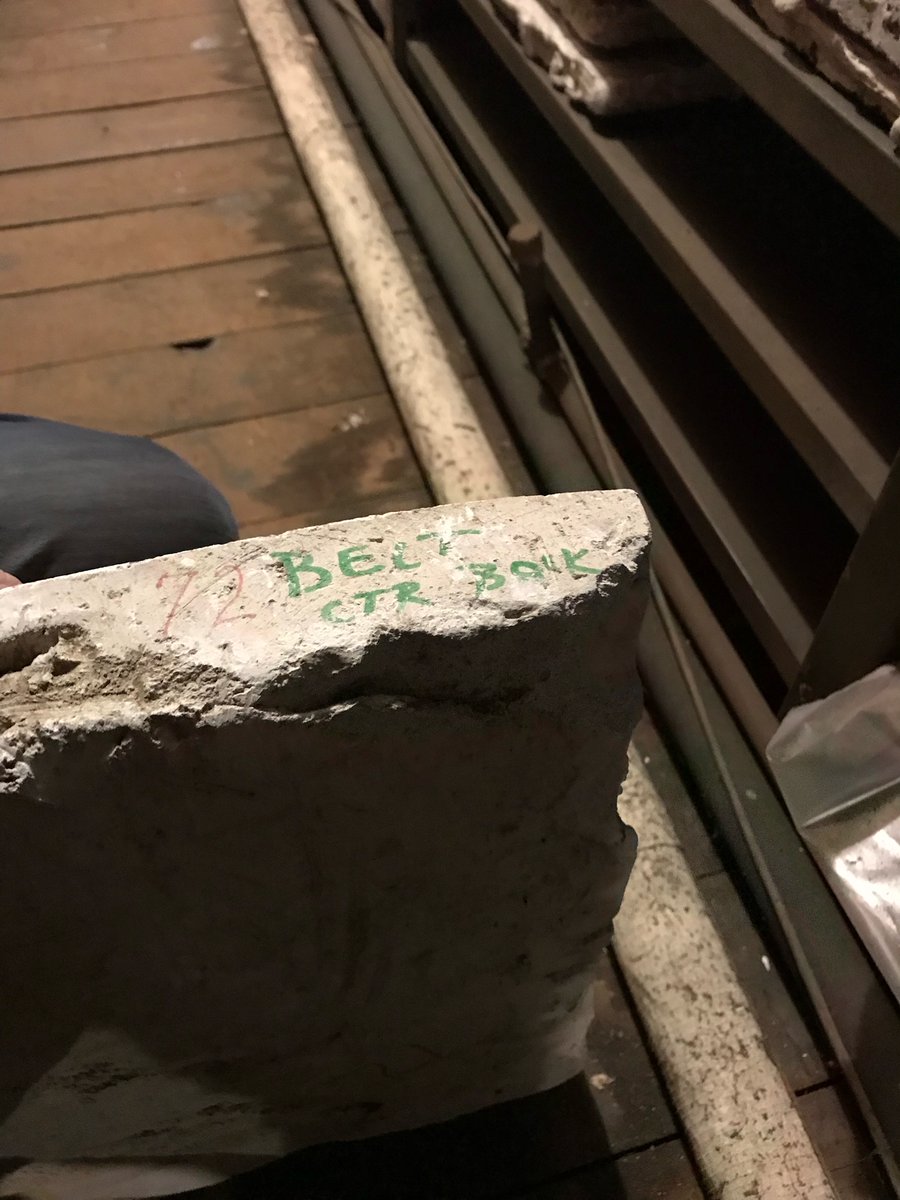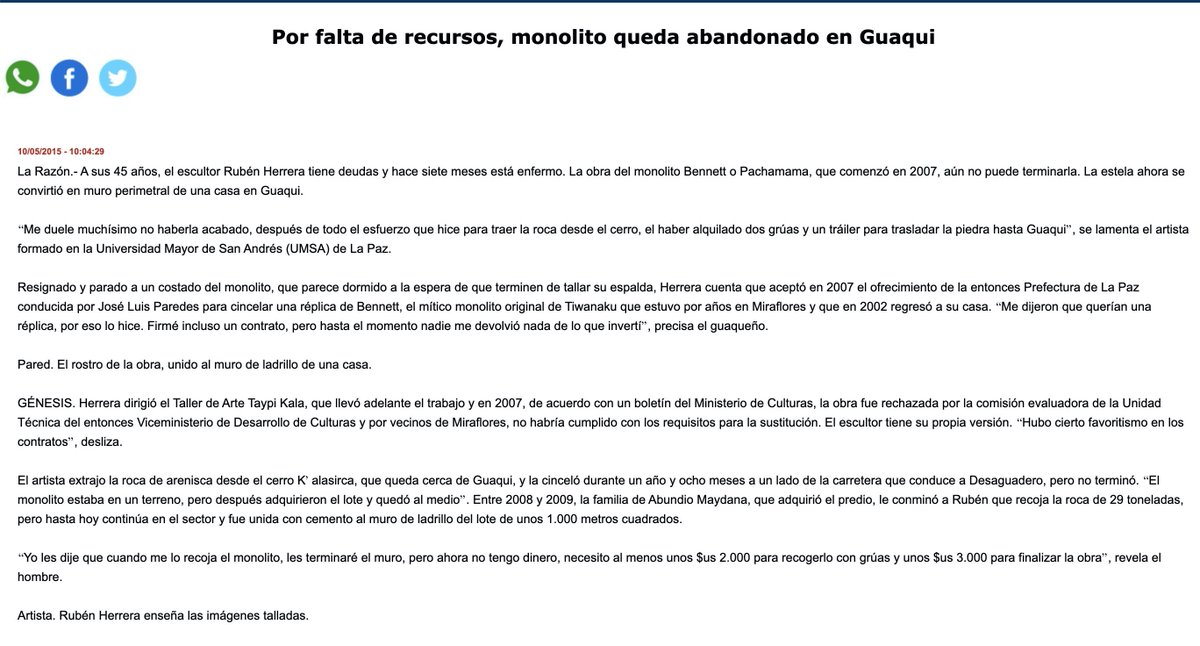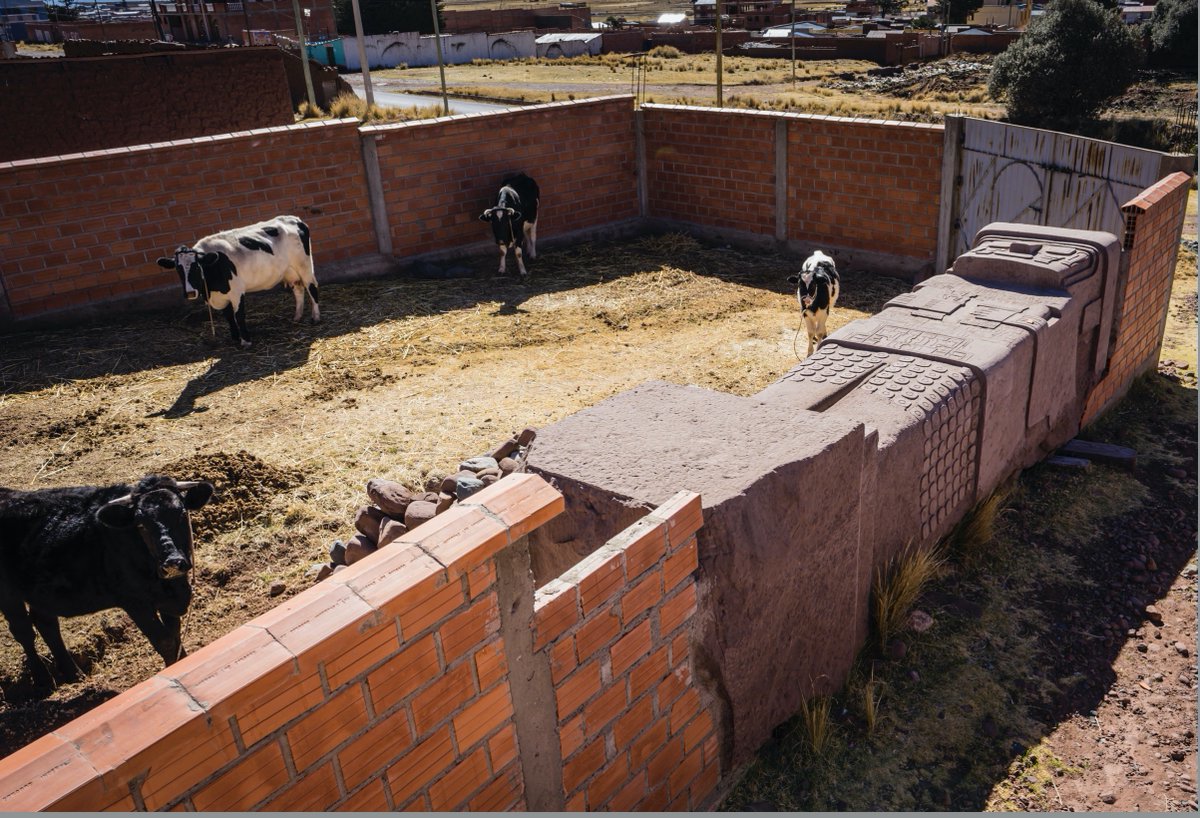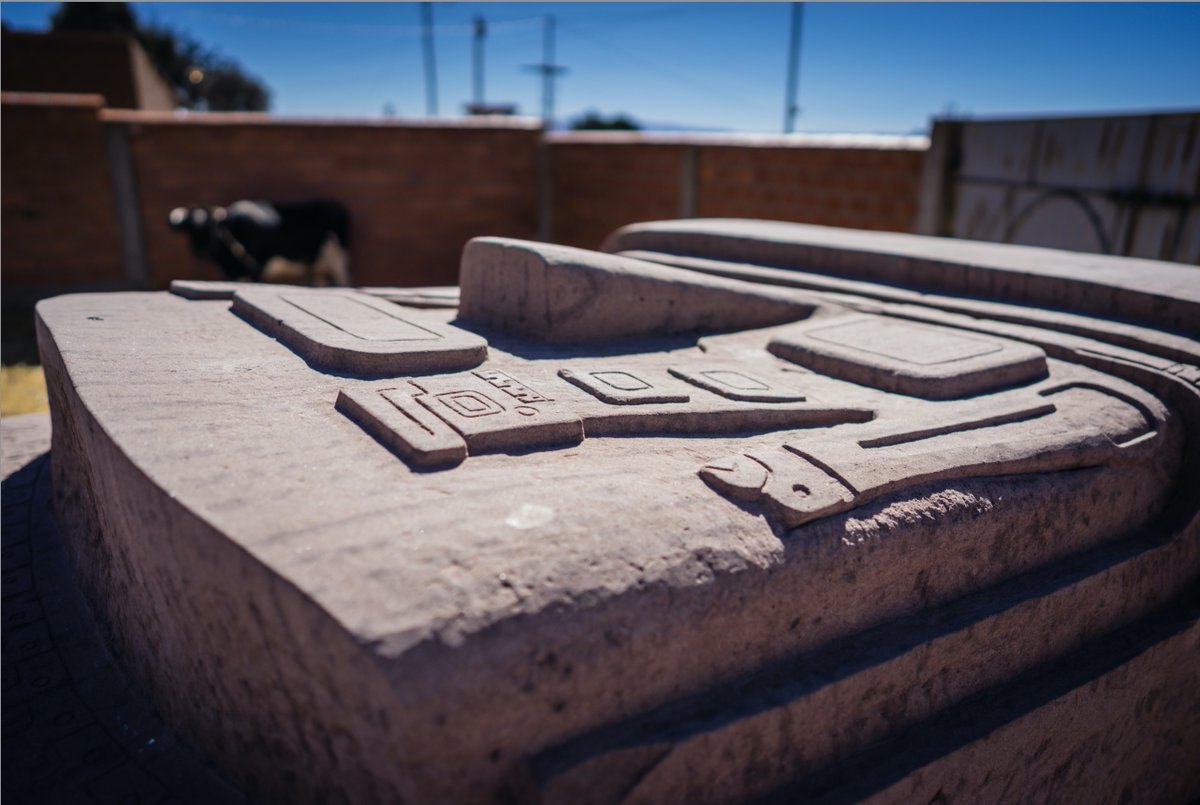We’ve seen lots of stories of "monoliths" turning up in recent days. These really are not really "-liths" (you know, made of stone), but have got me thinking about far more fascinating ones in the Andes, yet rarely get any press. So a long-ish thread into “monolith worlds” (1/25)
I have worked my Bolivian colleagues excavating and visiting many of the monoliths across the Bolivian and Peruvian highlands. Here is a red sandstone monolith we excavated in a sunken court in 2003. This dated to the 8th C BC, and like many of this period lacked carving (2/25)
But buried at its base was a finely carved stone. These stones are called lightning stones, because they prevent(ed) lightning from striking houses. This was the first recovered from an excavated context, but other carved lightning stones were circulating in the deep past(3/25)
I have studied a number of them in museums in Bolivia, Peru, and Germany. I have argued elsewhere that these lightning stones may have been animate, with a kind of aura. More on that soon. Here is another from a non-excavated context from the arch museum in La Paz. (4/25)
Throughout the Titicaca basin are many other kinds of monoliths. Here are a few I've encountered while working in Bolivia, dating to the Middle and Late Formative periods. Some have stood in these communities for generations, other have gone on more elaborate "travels" (5/25)
Here is a fave, from work by Sergio Chávez. This 1/2 monolith was found in Tiwanaku, the other 1/2 (@ 998 kg) was found 220 km away at Arapa, in a context 200 years older. Petrographic analysis of both fragments proved that these two fragments came from the same monolith. (6/25)
How to explain such movement? One suggestion is that these monoliths were captured in a kind of competition. In the recent past, Andean communities would steal animate stones from neighbouring communities. Perhaps something similar was happening here? (7/25)
Animacy has increasingly been a key way of thinking about the stone monoliths inhabiting the later urban site of Tiwanaku. Here, villagers talk about the ancient monoliths coming to life at night, wandering the streets, and sometimes getting into trouble. (8/25)
Anna Guengerich & John Janusek have just published an article on the Suñawa stone, a category they call "extended-arm monoliths". These monoliths guarded/accompanied "presentation monoliths" (more below). The Suñawa has a rich iconography of inanimate and animate beings. 9/25
The authors discuss the finding of the monolith in 1947 after a rare earthquake damaged a house near Tiwanaku. Labourers hired to dig up and create adobe bricks to repair a wall. In this process (at 50cm below surface) that the andesitic monolith was found (on its back). 10/25
The monolith was missing its feet. The family cemented a base and the monolith remains in their patio to this day. The feet were eventually found in the Tiwku museum collection, originally from a village ritual site, later converted to a soccer field. 11/25
Guengerich and Janusek found traces of gold-colored metallic lamina on the face, suggesting that plating may have been removed during the looting of the early Spanish Colonial period. 12/25
There is evidence that the Suñawa monolith was buried in 1572. Indeed, inscribed on the belly of the monolith was the date, with a cross, the same year that Viceroy Francisco de Toledo was beginning his efforts of eradicating indigenous forms of religious practice. 13/25
The other kind of monolith seen at Tiwanaku are called "presentation monoliths", the most imposing kind. Placed in courts and enclosures, they had elaborate clothes, often with a beer cup (kero) in the left hand and snuff tablet in right, offering them to humans. (14/25)
The best known is the Bennett monolith, found in 1932. This 7.3 meter monolith has gained prestige for its iconography and size. It lived for years in La Paz, before returning to Tiwanaku. Image here by @HistorietaBol (Scarborough 2008 has a succinct history too). (15/25)
But I want to talk about two fascinating “fictive-kin” of the Bennett, bringing me back to our current monolith moment. First, a less known moment of the Bennett monolith is that archaeologist Posnansky cast a plaster mold of the monolith shortly after it was excavated. 16/25
In 1937, Ponsansky was trying to convince the American Museum of Natural History to purchase these 120 pieces of plaster of paris for $1,500 (shipping costs for the 7,410 lbs extra). The AMNH was interested in having it lodged in their museum hall, but was too $$$. 17/25
Years of negotiations follow, with the mold eventually arriving in 1945. Many years of debate within the museum of how to cast the monolith. It sits and sits. The plaster suffers breakage, cracking, and abrasion. 18/25
And still nothing. I visited the AMNH several years ago to look at some pottery housed there. At the time, I had heard about this mold and asked to see it. It was there, in the dark bowels of the museum…perhaps still with the details that had since eroded off the original 19/25
This was exciting. The previous year, I
had came across a different relative of the Bennett monolith at a Bolivian website. In 2007 sculptor Ruben Herrera signed a contract with Guaqui, near the Peruvian border, to chisel a replica of the Bennett Monolith. 20/25
had came across a different relative of the Bennett monolith at a Bolivian website. In 2007 sculptor Ruben Herrera signed a contract with Guaqui, near the Peruvian border, to chisel a replica of the Bennett Monolith. 20/25
He extracted a 20-ton rock from a nearby hill using traditional techniques. He chiseled for a year and eight months in a space near the main road. But he was never paid. The monolith remains on land that was subsequently purchased, and was incorporated into part of a home. 21/25
The Ministry of Culture inspected the site in 2015, due to concern on social media over “this misuse of a replica of a capital asset”. The carver told the press that he found $$ to finish the job. Villagers told the press that Herrera came down with a sickness. 22/25
A seventy-year old resident of Guaqui told the press that the illness could only be resolved only by local shamans (yatiris). In July 2016 we met with the carver and saw his really incredible work. Although he did not discuss his sickness... 23/25
…he did mention that people now place candles and flowers at the foot of the replica Bennett Monolith. In fact, he returned to his work site several times to find local yatiris pouring grain alcohol on his work. The carving has what Benjamin would call an “aura” 24/25
As these metal anomalies (ahem, not monoliths) have been appearing, I've been thinking about the monolith I excavated, the travelling fragments, the Suñawa stone in that houselot, and the mold & replica of the Bennett monolith, and their amazing stories. I miss Bolivia. FIN 25/25

 Read on Twitter
Read on Twitter